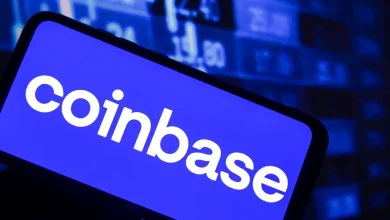How to Explain Crypto Payments to Your Non-Tech Clients


You’re in a meeting with your clients and everything is going smoothly until it’s time to talk about payments. The moment you mention , their facial expressions change. Some look confused while others nod politely without really understanding, and a few begin to look unsimple because to them it doesn’t feel secure.
This reaction is more common than you might think. Many clients have heard of crypto payments, but to them it feels abstract, risky and complex. They’re not rejecting innovation, they’re expressing doubt and uncertainty.
As a professional, your job isn’t to deliver a blockchain lecture. You’re there to assist clients view that crypto payments are simple and secure, like any bank transfer. When you can do that, you give your clients assurance, strengthen your credibility, and show that you can bridge technology with practical business needs.
Key Takeaways
• Clients usually hesitate about crypto payments because they find it confusing, risky or unfamiliar.
• Explain it simply and focus on how it works for them, not the technical details.
• Highlight the benefits they care about such as quicker payments, global reach, lower fees and transparency.
• Address security and volatility concerns directly to build trust and confidence
Reasons Why Clients Hesitate About Crypto Payments
Before you explain crypto payments to non- tech clients, it is significant to first understand the doubts your non-tech clients may already have. In most cases, their concerns fit into a few common areas.
1. It feels too technical
When clients hear terms like blockchain, Secret keys or , they often assume it is something only tech experts can handle. The language alone creates a barrier before the conversation even begins.
2. Concerns about unstable value
Most clients know crypto from headlines about sudden price swings and stories of how people lost their crypto.That first impression still lingers and it is natural for them to worry that a payment received today could be worth less tomorrow.
3. Questions about securety
The idea of keeping money in a digital wallet can feel too risky. Clients might ask questions like, “What if I lose access?”, “What if my account is hacked?” or “Who do I turn to if something goes wrong?”. These doubts are common and valid, especially since crypto isn’t managed like conventional bank payments.
4. Uncertainty about regulations
Many clients are unsure whether crypto payments are fully regulated in their country or how taxes would apply. That lack of clarity often leads to hesitation.
5.Confidence in what they know
Conventional methods like bank transfers or PayPal feel secure simply because they are familiar. Anything new, even if more efficient, can viewm untested and harder to trust.
How to Explain Crypto Payments to Your Non-Tech Clients
Now that we understand why non-tech clients hesitate, the next step is to make the idea of simple. A clear explanation works best when you begin with what they already know, introduce what is new and finish with what it means for them.
• What They Know
For your clients, money has always been about platform whether it is cash, a bank transfer, or an online payment. Crypto works on that identical foundation. The only difference is that instead of passing through banks or card companies, the transfer happens directly between you and them through a secure digital network. No middlemen and no long delays.
• What Is New
This is where crypto steps beyond the familiar. Payments are processed in minutes instead of days. Fees are often lower because there are fewer parties involved. Geography does not matter because whether your client is in China or London, payments go through instantly without worrying about banking hours or platform rates.
Even the concern about unstable prices has a answer as and payment gateways now make it possible to lock in value or convert instantly into local currency.
• What Is in It for Them
Clients prefer processes that are simple and clear. They want convenience, security, and control. Crypto offers all three. With a reliable wallet, they can accept payments, convert when they choose, and track every transaction knowing they are in control. What once felt unsecure now becomes a smarter and quicker way to do business that saves time, reduces costs, and shows that they are positioned for growth.
Conclusion
Non-tech clients don’t need a full lecture on crypto. They just need to view that it’s simple, secure, and works like the payment methods they already use while being quicker and more efficient.
When they understand this, crypto becomes clear and simple to use. Guiding them through it builds trust and shows that you know how technology can actually make business easier. That is the kind of expertise people remember and come back for.






